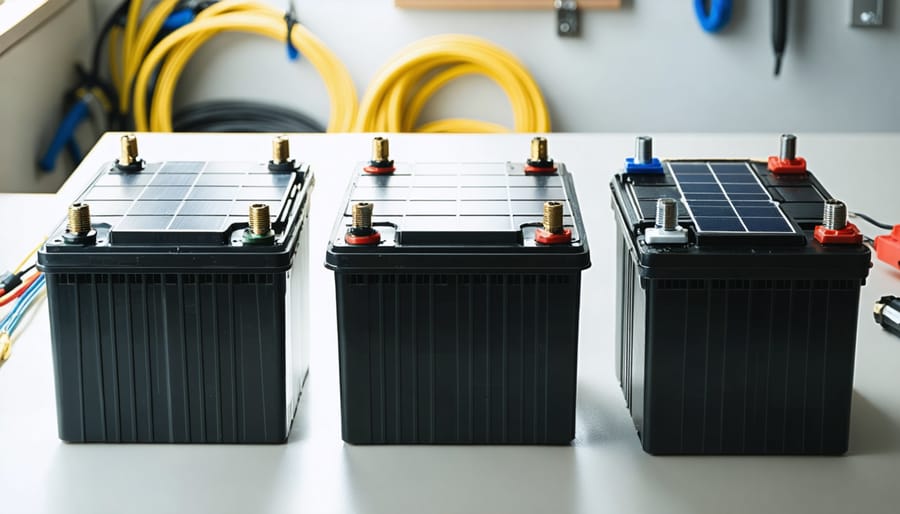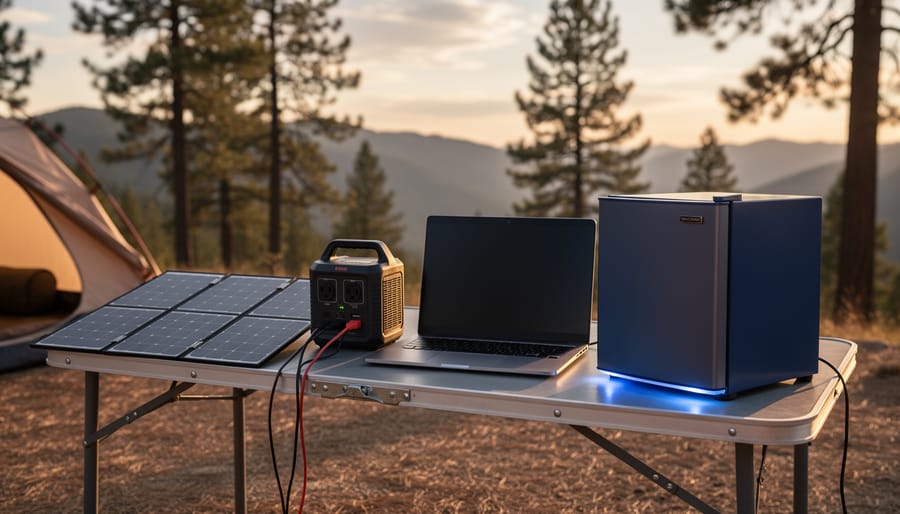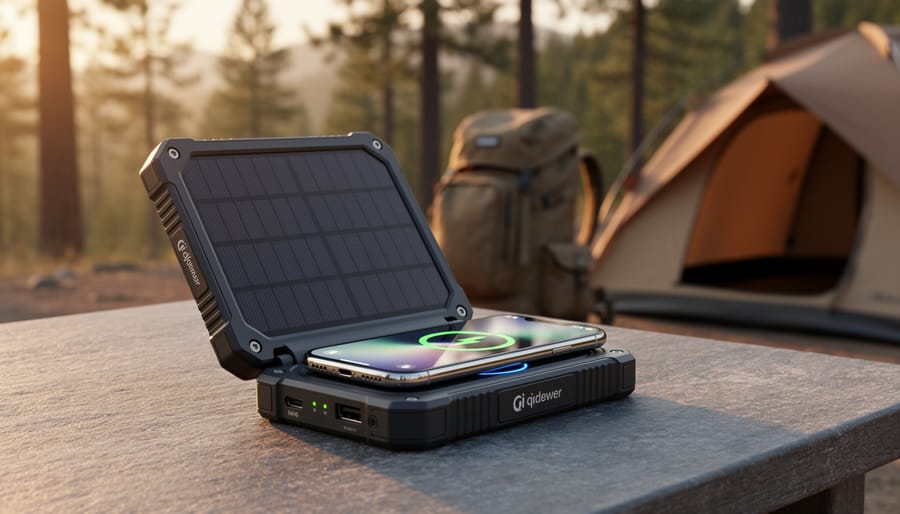How to Find the Right Solar Battery
Updated:

If you are looking to install a solar battery for your home, a few appliances, or a vehicle, you may be wondering what’s the best one to go for. There are many options on the market and a lot of them are very good with new technologies coming out every few years. Rather than staring at a pile of numbers and not understanding what they mean, let’s break down the most important data points you should look out for.
Finding the Right Size
Finding the right size is the first issue many encounter. This obviously depends on why you need your battery: are you charging a home or a vehicle or only looking to hook up a few small appliances?
Either way, you will need to calculate your energy needs by assessing your daily or annual electricity usage on the target object or home. For houses, the information is typically found on your electricity bill. Find out your energy requirements in kilowatt-hours (kWh) and you’ll have the first piece of the puzzle.
For your recreational vehicle or other appliance, you’ll want to check with the manufacturer or on the manual. There are also energy monitoring tools and sensors you can use to get to know how much energy they use. Most homes 1-2 person households in the UK use roughly a bit less than enough electricity for a 10.5kWh system to be appropriate. When you scale it up to 3 or 4 people, a 13-20kWh battery can be fine.
No matter what battery you buy, if you plan on using it extensively like an off-grid solution, you should generally buy something with 25% to 50% more capacity than the appliance would need to run for the period you will use it on battery power. This can get expensive for a whole house so the numbers may vary. Most RVs consume 600kWh each month, so use that as a rule of thumb.
Make sure you’ve factored in how many days you want your battery to support your energy needs without sunlight. This is particularly important in areas with frequent cloudy days or during extended power outages. More days of autonomy require a larger battery capacity.
You also should consider when you use the most electricity (daytime vs. nighttime). Solar panels can take most of the load during daytime but if you’re a heavy nighttime user, you will need a bigger battery to compensate for when there is no charge coming in. The size of your solar panel system will also come into play since the bigger it is, the more excess energy it will produce.
Finally, it’s also important to think about the future and how much you may end up using if you’re going to scale up your consumption. Anything could happen: lifestyle changes or additional members in your household could pop up. For appliances and vehicles, there is a risk that they degrade and start consuming more over time, so that’s another thing to keep in mind for future projections. You may even want to factor in guests. It might be wise to opt for a slightly larger battery size to accommodate future needs.
Usable Capacity and Series Capacity
First up, let’s talk about solar battery size in terms of the battery itself and how to assess it. This is the total capacity of your battery on paper. Larger batteries will store more but they can be expensive. Batteries like the SunPower SunVault and Tesla Powerwall are praised for their high usable capacity and series capacity potential, with a 13kWh (minimum) and 13.5kWh capacity per battery, respectively.
Conversely, If you’re unaware of solar battery costs and stats and think the only option is to buy one big storage, that’s not always the case. Solar batteries can be stacked with each other in series to increase their total power.
This is why another important factor to consider is how many you can combine in a series. This is usually indicated in the specs sheet and some batteries have a limited number they can be passed through. When connecting in series it’s appropriate to have the battery sizes match.
Higher capacities mean higher prices though. For those aiming to power a household, expect to spend between $10,000 and $20,000 on a good-quality battery including installation.
However, if your needs are more modest, perhaps just powering a few appliances, a smaller battery will be a better option. Something like the Enphase IQ might be a great choice for smaller capacities that can be expanded later on. Starting with a smaller, less expensive battery and gradually increasing capacity can be a cost-effective strategy for those unsure about their long-term needs.
Power Output & Discharge Rates
Next, you may need to pay attention to the battery’s round-trip efficiency, which indicates the percentage of energy that is available for use out of the total energy stored. Also, consider the battery’s depth of discharge (DoD), and the percentage of the battery’s capacity that has been used. Higher DoD means more usable energy.
The Continuous Power Output (CPO) is the next thing to keep in mind. This is how much power the battery can consistently provide, impacting how many appliances you can run simultaneously. Low outputs can be fine for limited uses but something more extensive like a whole house may prove to be troublesome for many low-CPO batteries.
Similar to the usable capacity, the Depth of Discharge is the percentage of the battery’s total capacity that’s usable till it starts to run out. A battery with a 90% DoD and a 10kWh total capacity on paper will offer 8kWh of use. This is good to look out for as the paper specs can be deceptive sometimes or just not pan out for your set up.
The Price per Kilowatt Hour (kWh) is also important if the purpose of your battery has more to do with savings. This handy number will outline the cost of charging the battery to full capacity in terms of money, thus showing you the long-term operating expenses.
Installation Considerations
Another tip for you: When evaluating batteries, it’s crucial to consider both on-paper specs and real-world performance, including warranties that reveal much about expected lifespan and efficiency retention over time.
One of the main things to look at is the warranty. That can be a good indication of the battery’s longevity and reliability. The specifics of the warranty indicate confidence in the product’s durability.
Before you settle on a battery you also need to make sure it works with your solar panel setup. Not every battery is compatible with every solar panel system on the market. In fact, a lot of batteries only work with panels from the same brand with Tesla as a prime example. Compatibility with solar panels and also inverters is a critical factor, as seen with the LG Resu line’s broad but not universal compatibility.
At the end of the day, choosing the right solar battery entails balancing capacity, efficiency, compatibility, and cost against your household’s energy consumption needs. It’s always recommended to get a professional assessment. Solar energy companies can provide detailed analyses based on your energy usage, solar PV system size, and other factors to recommend the most suitable battery size and configuration.








